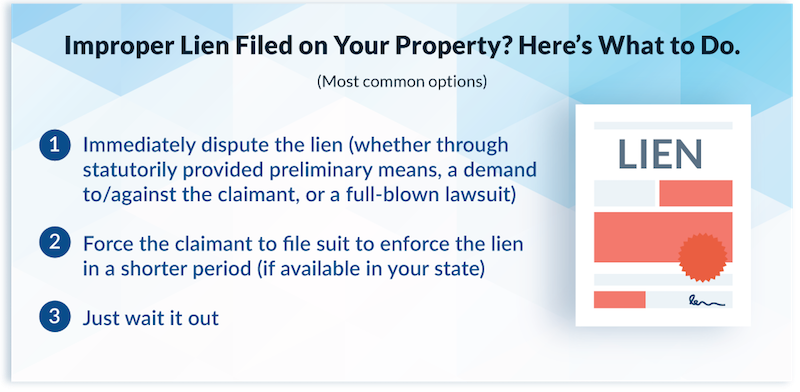
Mechanics liens are powerful tools to get construction industry participants paid – but just like any other powerful tool, they can be abused. Whether the abuse is intentional, or a potential claimant just didn’t meet the strict statutory requirements to claim a valid enforceable lien, property owners or other interested parties may need to take steps to have an insufficient lien removed.
There are multiple options when a lien is filed against your property. Three of the most common are:

- 1) immediately dispute the lien (whether through statutorily provided preliminary means, a demand to/against the claimant, or a full-blown lawsuit)
- 2) force the claimant to file suit to enforce the lien in a shorter period (if available in your state)
- 3) just wait it out
For our purposes here, we will use a hypothetical Pennsylvania-based construction project to briefly examine options available when an insufficient lien is filed. While these potential steps are specific outlined by Pennsylvania law, some other states have similar options to contest or remove invalid liens, and a review of the lien law statutes in your state can provide some guidance.
How to Remove Mechanics Lien Quickly
Pennsylvania has many specific requirements that must be met in order for a claimed lien to be valid and enforceable. These requirements include: a debt of more than $500, notice requirements (for parties that did not contract directly with the property owner), timing requirements, and filing and service requirements (Pennsylvania has strict service requirements after the lien has been recorded). Failure to comply with any of the above requirements, including the $500 floor, can all be enough to render the lien invalid / unenforceable.
Contest the Claim by Filing “Preliminary Objections”
Pennsylvania mechanics lien law (along with that of many other states) provides for a procedure for contesting a lien claim that does not comply with the mechanics lien act. In Pennsylvania, an owner is allowed to file “preliminary objections” to the lien claim with the court, and the court will make a determination. If there is a question of fact related to the determination of whether the lien is or is not valid, the court may take evidence to assist in the determination (like a deposition of interested parties or other evidence).
A property owner who has been made defendant in a procedurally or substantively defective lien can file these “preliminary objections” in an attempt to have the invalid lien removed in a quick and relatively inexpensive manner. To best position themselves for the removal of the insufficient lien, the owner should set forth all bases for belief that the lien is improper in the preliminary objections. The objections may be filed prior to the lien claimant initiating an enforcement action, and likely should be, to avoid the requirement to file a regular answer to the enforcement action.
This is an action in court, and while an individual may represent him/herself, it is rarely a good idea, and it may be worth while to enlist the services of an attorney. Additionally, there are generally prohibitions about business entities representing themselves in court actions.
Further Reading:
Frivolous Mechanics Liens: Intentionally Fraudulent vs. Honest Mistakes
Another Option, But Only on Some Residential Projects
There is potentially another option to have a lien removed quickly (that also requires a court action). But, this option is only available if the project was on a single or double residential project, and the owner has paid the GC the full contract amount. In such situations, liens are disallowed by law. If a lien is filed in that instance, the owner can petition the court for an immediate discharge of the lien.
While these exact procedures are specific to Pennsylvania, there are many states with similar options to get a fraudulent or facially insufficient lien removed. Just because payment problems are common in construction, and liens are a powerful tool to combat those issues, doesn’t meant that they are always appropriate, and sometimes, there must be a way to get them removed quickly.
Free Resource
Download the Visual Guide to Preliminary Notice Requirements, an infographic that covers preliminary notice requirements and deadlines in all 50 states.

